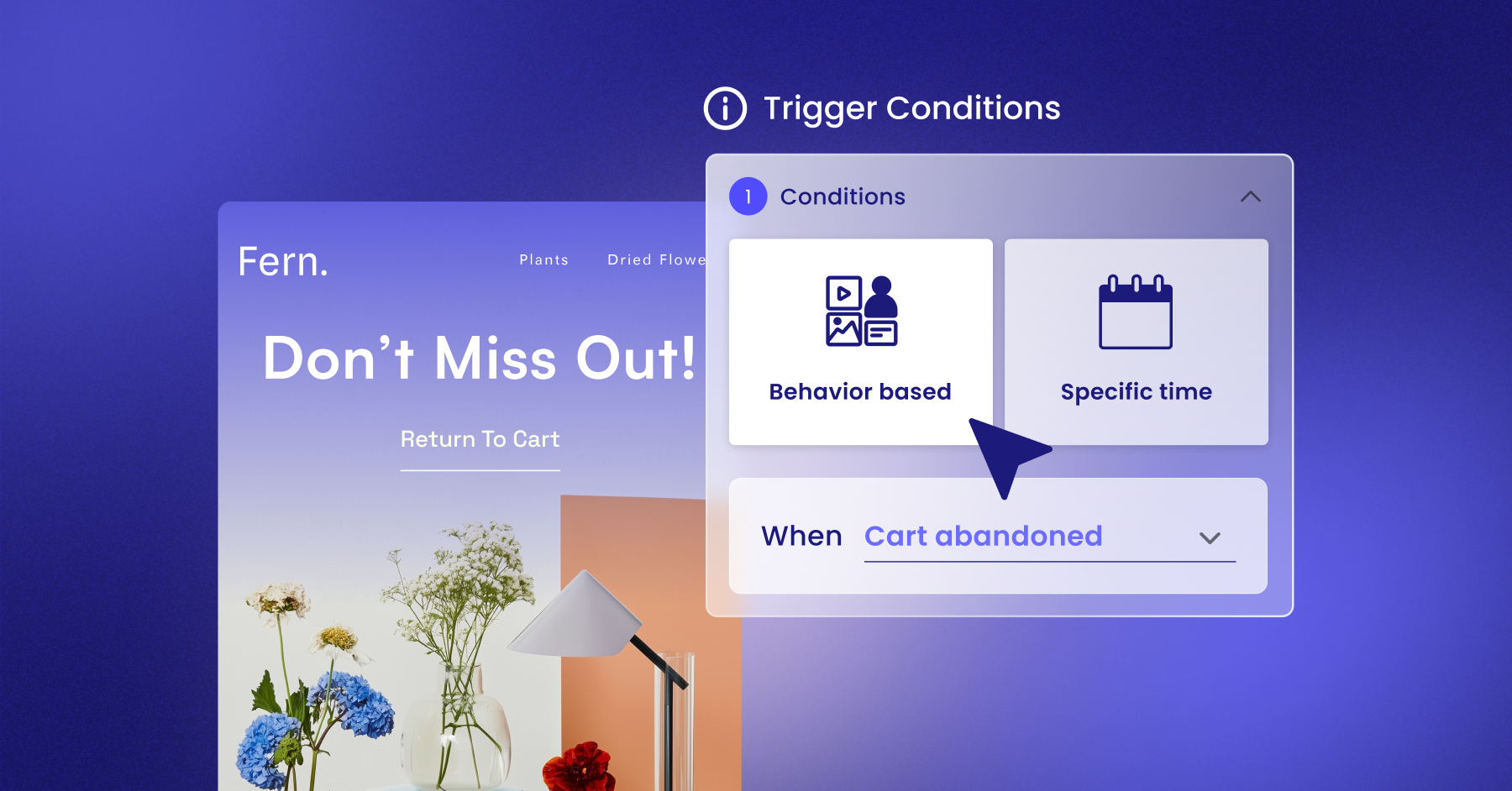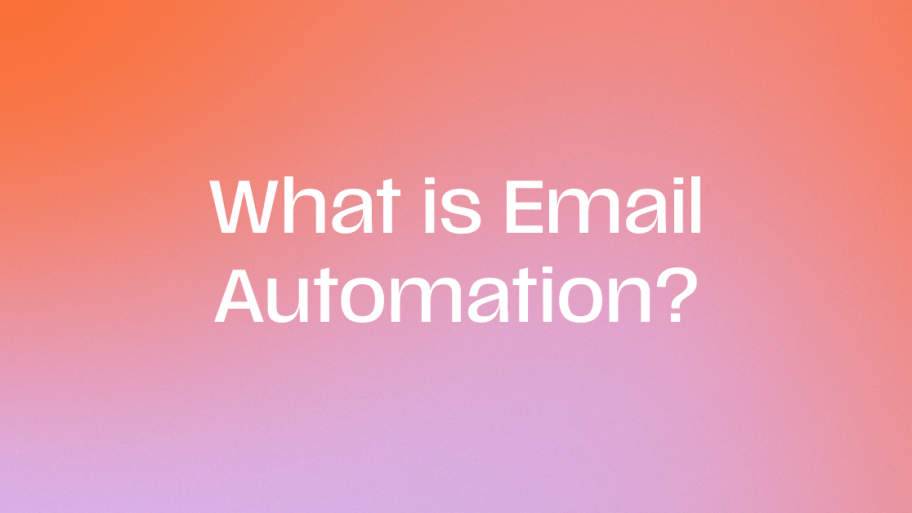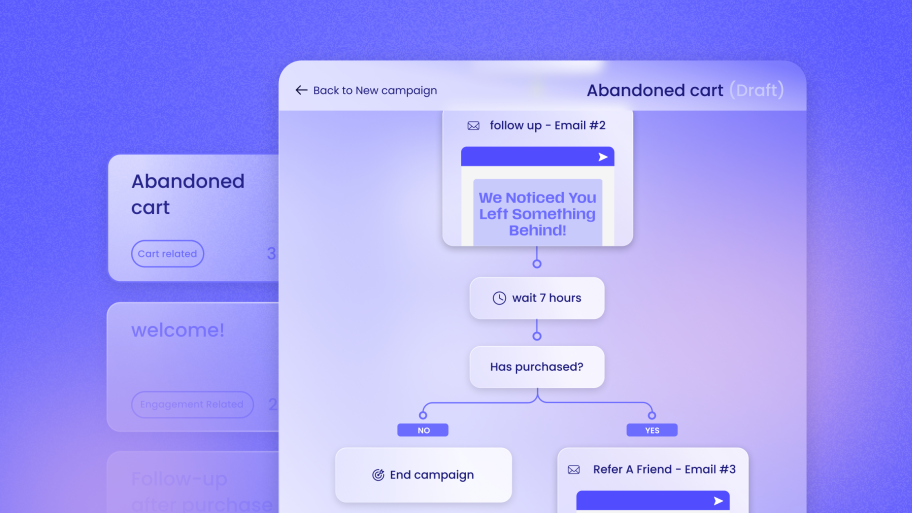Key Takeaways
- WordPress-Native is Key: The most effective marketing automation platforms for 2025 are those built specifically for WordPress. A native solution like Send by Elementor eliminates the common friction points of third-party tools, offering seamless integration, a familiar interface, and superior performance without slowing down your site.
- All-in-One vs. Specialized Tools: While some platforms excel at one specific function, the trend is moving toward comprehensive toolkits. Platforms that combine email, SMS, automation, and segmentation in a single interface provide a more cohesive and efficient workflow, saving you time and reducing the need for multiple plugins.
- Focus on the Creator Economy: The best solutions empower web creators, freelancers, and agencies to offer more value to their clients. Tools like Send by Elementor are designed not just for business owners but also for the professionals who build and manage websites, providing them with a path to recurring revenue.
- Data and Analytics Drive Decisions: Actionable, real-time analytics are non-negotiable. The ability to track campaign performance, attribute revenue, and understand customer behavior directly within the WordPress dashboard is crucial for demonstrating ROI and making informed marketing decisions.
- Scalability Matters: Your chosen platform should be able to grow with your business. Look for flexible, usage-based pricing models that don’t penalize you for expanding your contact list or increasing your sending volume. A fair pricing structure ensures you only pay for what you need.
The Top 9 Marketing Automation Platforms for WordPress
Here’s our breakdown of the best marketing automation platforms for WordPress in 2025. We’ll start with the solution that stands out for its deep integration and focus on the WordPress ecosystem.
1. Send by Elementor
Send by Elementor is not just another marketing tool adapted for WordPress; it was born for WordPress. This distinction is its greatest strength. Designed from the ground up as a WordPress-native communication toolkit, Send is engineered to feel like a natural extension of your existing dashboard. It’s built for web creators, freelancers, and agencies who need a powerful, yet straightforward, solution to offer marketing services to their clients without ever leaving the familiar WordPress environment.
For those who build websites, especially with Elementor, Send introduces a seamless way to integrate essential communication channels like email and SMS. It addresses the core pain points that creators face when dealing with external marketing platforms: complicated API integrations, data syncing issues, and the disjointed user experience of juggling multiple dashboards. Send consolidates everything into one place, allowing you to manage campaigns, automate workflows, and track results without friction.
Why It Stands Out in 2025
What makes Send particularly relevant for 2025 is its focus on empowering the creator economy. The platform is strategically designed to help web professionals expand their service offerings beyond one-off website builds. By integrating a recurring service like marketing automation, creators can build long-term, value-driven relationships with their clients. This model fosters client loyalty and unlocks sustainable, recurring revenue streams—a crucial business evolution for any freelancer or agency looking to grow.
The platform’s pre-built automation flows are a significant advantage. Workflows for abandoned carts, welcome series, and customer re-engagement are ready to deploy out of the box. This “set-and-forget” approach lowers the barrier to entry for creators who may be new to marketing automation, allowing them to deliver sophisticated campaigns for their clients with minimal effort. The drag-and-drop email builder, complete with ready-made templates based on Elementor’s design principles, ensures that every communication looks professional and on-brand.
Key Features and Benefits
- Truly WordPress-Native: This is the core differentiator. Send operates entirely within your WordPress dashboard. The user interface is intuitive for anyone familiar with WordPress, and because it’s native, it avoids the performance issues and plugin conflicts that can arise from third-party integrations.
- All-in-One Communication Toolkit: Send combines email marketing, SMS marketing, automation flows, and audience segmentation into a single, unified platform. This eliminates the need for multiple, disparate tools and provides a holistic view of your customer communication strategy.
- Effortless Setup and Management: The platform is designed for simplicity. You can import contacts, sync them with WooCommerce or form submissions, and launch pre-built automation flows in minutes. This simplicity makes it an ideal solution for creators to manage on behalf of their clients.
- Demonstrable ROI with Real-Time Analytics: Send provides clear, easy-to-understand analytics that connect your marketing efforts directly to revenue. You can track open rates, click-through rates, and, most importantly, how many sales your campaigns are generating. This makes it simple to prove the value of your services to clients.
- Seamless WooCommerce Integration: For e-commerce sites, Send offers deep integration with WooCommerce. You can segment customers based on their purchase history, create targeted campaigns for specific products, and automate follow-ups to boost customer retention. The abandoned cart recovery feature alone is a powerful tool for instantly increasing sales.
Who Is It For?
Send by Elementor is the ideal solution for:
- WordPress Freelancers and Agencies: Who want to add a recurring revenue service to their offerings and provide more ongoing value to clients.
- WooCommerce Store Owners: Who need a simple, integrated way to manage their email and SMS marketing without the complexity of external platforms.
- Web Creators New to Marketing: Who need an intuitive tool that lowers the barrier to entry for implementing effective marketing automation.
In summary, Send by Elementor is more than just a marketing automation tool; it’s a business growth tool for the WordPress community. Its native design, comprehensive feature set, and focus on empowering creators make it the top choice for anyone looking to build a powerful and profitable communication strategy directly within WordPress.
2. HubSpot
HubSpot offers a comprehensive marketing automation platform that integrates with WordPress via its official plugin. The platform is known for its all-in-one approach, combining marketing, sales, service, and a CRM system. This makes it a powerful option for businesses looking to manage their entire customer lifecycle from a single hub. The HubSpot WordPress plugin brings many of these features directly into your dashboard, allowing you to capture leads, track their activity, and engage them with email campaigns.
The platform provides a suite of tools including a form builder, live chat, email marketing, and analytics. Its strength lies in the depth of its CRM, which automatically logs every interaction a contact has with your website. This data can then be used to create highly targeted segments and personalized automation sequences.
Technical Specifications and Features
- CRM Integration: At its core, HubSpot is a CRM. The WordPress plugin syncs your website’s contacts and activities with the HubSpot CRM, providing a detailed record of each lead.
- Lead Capture Tools: The plugin includes tools for creating forms, pop-ups, and live chat widgets to capture leads on your WordPress site.
- Email Marketing: Users can design and send marketing emails using a drag-and-drop editor. The platform includes basic automation features, such as sending an email after a form submission.
- Analytics Dashboard: HubSpot provides a built-in analytics dashboard to monitor the performance of your marketing efforts. It tracks form submissions, email engagement, and contact growth over time.
- Third-Party Integration: While it offers an all-in-one solution, HubSpot also integrates with a wide range of other marketing and sales tools.
The setup involves installing the HubSpot plugin on your WordPress site and connecting it to a HubSpot account. Once connected, you can manage many of the core functions from within WordPress, though more advanced configuration and detailed analytics often require logging into the main HubSpot web application.
3. Brevo (formerly Sendinblue)
Brevo is a marketing platform that provides a suite of tools including email marketing, SMS marketing, chat, and a CRM. Its WordPress plugin allows users to integrate these features into their website. Brevo is positioned as a versatile solution that caters to businesses of all sizes, with a pricing model that is often considered accessible for those just starting out.
The platform’s features are broad, covering many aspects of digital communication. Through the WordPress plugin, you can create subscription forms, manage your contact lists, send email campaigns, and set up marketing automation workflows. The plugin also ensures that your WordPress contacts are automatically synced with your Brevo account.
Technical Specifications and Features
- Multi-Channel Marketing: Brevo combines several communication channels, including email, SMS, and live chat, into one platform.
- Marketing Automation: The platform includes a workflow editor that allows you to build automation sequences based on user behavior, such as page visits or email engagement.
- Transactional Emails: Brevo can handle transactional emails for your WordPress site, such as password resets and order confirmations, ensuring reliable delivery.
- Contact Management: The plugin helps you manage your contacts by syncing new user registrations and form submissions with your Brevo account.
- Reporting: The platform offers real-time reporting on the performance of your email campaigns, including open rates, click rates, and deliverability metrics.
To use Brevo with WordPress, you need to install their plugin and configure it with an API key from your Brevo account. Forms and other features can then be managed through the plugin’s settings in the WordPress dashboard.
4. Omnisend
Omnisend is a marketing automation platform designed specifically for e-commerce businesses. Its integration with WordPress is primarily focused on WooCommerce, providing a set of tools to help online stores increase their sales. Omnisend combines email marketing, SMS, and push notifications to create a multi-channel communication strategy.
The platform’s main strength is its deep integration with e-commerce data. It allows you to segment your audience based on their shopping behavior, such as products viewed, items added to cart, and purchase history. This enables the creation of highly targeted and automated campaigns like abandoned cart reminders and product recommendations.
Technical Specifications and Features
- E-commerce Automation: Omnisend offers pre-built automation workflows tailored for e-commerce, including welcome series, cart abandonment, and cross-sell campaigns.
- Segmentation: The platform provides robust segmentation capabilities that leverage WooCommerce data, allowing you to target customers with personalized messages.
- Multi-Channel Campaigns: You can incorporate email, SMS, and web push notifications into a single automation workflow to reach customers on their preferred channel.
- Lead Capture Forms: Omnisend includes a variety of lead capture forms, such as pop-ups, landing pages, and interactive “Wheel of Fortune” forms.
- A/B Testing: The platform allows you to A/B test your email campaigns to optimize subject lines, content, and sending times.
The integration process requires installing the Omnisend for WooCommerce plugin and connecting it to your Omnisend account. This syncs your store’s data, including customers, products, and orders, with the platform.
5. Mailchimp
Mailchimp is one of the most widely known email marketing platforms, and it offers integration with WordPress through various plugins, including its official Mailchimp for WordPress plugin. The platform has expanded over the years to include marketing automation, landing pages, and a CRM, making it a more comprehensive solution.
For WordPress users, the integration primarily focuses on growing your email list. The plugin allows you to create customizable sign-up forms and add them to your website. It also integrates with popular form and e-commerce plugins to ensure that new contacts are automatically added to your Mailchimp audience.
Technical Specifications and Features
- Email Marketing: Mailchimp is best known for its user-friendly email editor and a wide range of templates.
- Audience Management: The platform provides tools for managing your contacts and segmenting them based on various criteria.
- Basic Automation: Mailchimp offers basic automation features, such as welcome emails and simple multi-step customer journeys.
- Form Integration: The official plugin and other third-party integrations make it easy to connect your WordPress forms to your Mailchimp account.
- Reporting and Analytics: You can track the performance of your campaigns with reports on opens, clicks, and audience growth.
To connect Mailchimp to WordPress, you typically install a plugin and link it to your account using an API key. From there, you can build forms and manage list subscriptions from within WordPress, while campaign creation and automation are managed in the Mailchimp web interface.
6. ActiveCampaign
ActiveCampaign is a customer experience automation platform that offers powerful marketing automation, email marketing, and CRM tools. It integrates with WordPress through an official plugin, allowing you to connect your website to its advanced automation capabilities. The platform is geared towards businesses that want to create sophisticated, personalized customer journeys.
The strength of ActiveCampaign lies in its flexible and powerful automation builder. You can create complex workflows based on a wide range of triggers and conditions, including site tracking, email engagement, and CRM data. The plugin for WordPress enables site tracking, allowing you to trigger automations based on the pages your contacts visit.
Technical Specifications and Features
- Advanced Automation: ActiveCampaign features a visual automation builder that allows for the creation of intricate workflows with multiple conditions and actions.
- Site Tracking: The WordPress plugin adds site tracking capabilities, so you can monitor visitor behavior and use that data to trigger personalized automations.
- Lead Scoring: The platform includes a lead scoring feature to help you identify your most engaged contacts.
- Integrated CRM: ActiveCampaign has a built-in CRM to manage your sales pipeline and customer relationships.
- Conditional Content: You can personalize your emails with conditional content, showing different messages to different segments within the same campaign.
Setting up ActiveCampaign on WordPress involves installing the plugin, entering your API credentials, and enabling site tracking. You can also use the plugin to embed ActiveCampaign forms on your website.
7. ConvertKit
ConvertKit is an email marketing platform built for creators, such as bloggers, authors, and course creators. Its approach to email marketing is focused on simplicity and automation, helping creators build and engage their audience. The ConvertKit WordPress plugin provides a straightforward way to integrate its features into your site.
The platform is known for its tag-based subscriber system, which allows for flexible segmentation. Instead of managing multiple lists, you manage a single list of subscribers and organize them with tags. The WordPress plugin makes it easy to add forms and manage content upgrades, which are resources offered in exchange for an email address.
Technical Specifications and Features
- Creator-Focused: ConvertKit’s features are designed with the needs of content creators in mind.
- Tag-Based System: The use of tags for segmentation provides a flexible way to organize and target your audience.
- Visual Automations: ConvertKit offers a visual automation builder to create automated email sequences.
- Forms and Landing Pages: The platform includes tools for creating customizable forms and landing pages to grow your email list.
- Content Upgrades: The WordPress plugin simplifies the process of offering content upgrades to your readers.
The integration is managed through the ConvertKit plugin. After adding your API key, you can embed forms on your pages and posts and set up default forms for different content types.
8. Drip
Drip is an e-commerce marketing automation platform that focuses on helping online stores build personal and profitable relationships with their customers. It provides deep integration with e-commerce platforms like WooCommerce, allowing businesses to leverage their store data for highly personalized marketing.
The platform’s core feature is its “Workflows,” a powerful visual automation builder that allows you to create complex customer journeys. Drip’s integration with WordPress and WooCommerce enables you to track customer behavior on your site and use that data to trigger targeted email and SMS campaigns.
Technical Specifications and Features
- E-commerce CRM: Drip acts as a CRM for e-commerce businesses, providing a unified view of each customer’s activity.
- Visual Workflows: The platform’s visual automation builder is powerful and flexible, allowing for the creation of sophisticated marketing sequences.
- Deep E-commerce Integration: Drip syncs with your WooCommerce store to pull in customer, order, and product data for segmentation and personalization.
- Personalization: You can use your store’s data to personalize your marketing messages with dynamic content, such as product recommendations.
- Forms and Pop-ups: Drip includes tools for creating on-site forms and pop-ups to capture leads.
To connect Drip with WordPress, you install the Drip WooCommerce plugin, which handles the syncing of your e-commerce data. You also add a JavaScript snippet to your site to enable visitor tracking.
9. Groundhogg
Groundhogg is a self-hosted marketing automation plugin for WordPress. Unlike the other platforms on this list, which are SaaS (Software as a Service) solutions, Groundhogg runs entirely on your own WordPress installation. This means you own and control all of your data, and there are no limits on the number of contacts you can have.
The plugin provides a suite of tools, including a CRM, email marketing, and a marketing automation builder. Because it’s a native WordPress plugin, it integrates deeply with other WordPress tools and plugins, such as WooCommerce and form builders.
Technical Specifications and Features
- Self-Hosted: Groundhogg operates on your own server, giving you full control over your data and no contact limits.
- WordPress-Native CRM: The plugin includes a CRM that lives inside your WordPress dashboard.
- Funnel Builder: Groundhogg features a visual funnel builder for creating marketing automation sequences.
- Email Marketing: You can send email broadcasts and automated campaigns directly from your WordPress site.
- Extensibility: The platform can be extended with a variety of premium extensions for additional functionality.
As a WordPress plugin, Groundhogg is installed and managed like any other plugin. It requires an email sending service to handle the delivery of your emails, as it does not have its own.
How to Choose the Best Marketing Automation Platform for WordPress
Selecting the right platform is a critical decision that can have a long-term impact on your business. Here are the key criteria to consider when making your choice.
1. Depth of WordPress Integration
This is arguably the most important factor. A platform that is truly WordPress-native will always offer a smoother experience than one that is simply “integrated” with WordPress.
- Native vs. Third-Party: A native solution like Send by Elementor is built as a part of WordPress. This means it shares the same database, uses the same UI patterns, and doesn’t rely on a complex API to sync data. Third-party platforms, even with a dedicated plugin, operate externally. This can lead to data lags, potential security vulnerabilities, and a more cumbersome workflow that requires you to switch between different dashboards.
- Performance Impact: External scripts and constant API calls from third-party plugins can slow down your website. A native tool is optimized for the WordPress environment and typically has a much lighter footprint, ensuring your site remains fast and responsive.
2. Ease of Use
Your marketing automation platform should empower you, not intimidate you. The learning curve should be minimal, and the day-to-day management should be efficient.
- Intuitive Interface: Does the platform’s dashboard make sense? Can you easily find the tools you need to build a campaign or set up an automation? A platform that uses the familiar WordPress UI will be much easier for you and your team to adopt.
- Pre-built Templates and Workflows: The availability of professionally designed templates and pre-built automation flows is a huge time-saver. Look for platforms that offer ready-made solutions for common scenarios like welcome series, abandoned cart recovery, and lead nurturing. This allows you to launch sophisticated campaigns quickly, even if you’re not a marketing expert.
3. Core Features and Functionality
While every platform will offer email marketing, the depth and breadth of features can vary significantly.
- All-in-One Toolkit: A platform that combines email, SMS, automation, segmentation, and analytics in one place is more efficient than juggling multiple tools. This integrated approach provides a single view of the customer and ensures a consistent experience across all channels.
- Automation Capabilities: Evaluate the power and flexibility of the automation builder. Can it handle simple, linear sequences as well as complex, multi-branching workflows? Look for a visual builder that makes it easy to design and understand your automation flows.
- Segmentation: The ability to segment your audience is crucial for personalization. Check if you can create segments based on demographics, behavior (like pages visited), and, for e-commerce sites, purchase history.
4. Scalability and Pricing
Your chosen platform should be able to support your business as it grows.
- Pricing Model: Many platforms charge based on the number of contacts in your list. While this is a common model, it can become expensive quickly. Look for platforms with fair, usage-based pricing that doesn’t penalize you for growing your audience. A generous free tier is also a great way to get started without a significant upfront investment.
- Scalability: Can the platform handle a large volume of contacts and emails without performance issues? If you plan to grow your list to tens or hundreds of thousands of subscribers, you need a solution that is built to scale.
5. Analytics and Reporting
Without data, you’re just guessing. Your marketing automation platform must provide clear, actionable insights into your performance.
- Real-Time Analytics: You should be able to see how your campaigns are performing in real time. This includes metrics like open rates, click-through rates, and conversion rates.
- Revenue Attribution: For e-commerce businesses, the ability to directly attribute revenue to specific campaigns is essential. This feature allows you to calculate the ROI of your marketing efforts and prove the value of the platform.
- Integrated Dashboard: The best solutions present this data in an easy-to-understand dashboard directly within WordPress. This saves you the hassle of exporting data or logging into another platform to see your results.
By carefully evaluating each of these criteria, you can select a marketing automation platform that not only meets your current needs but also supports your long-term growth and success.
A General Guide to Implementing Marketing Automation
Once you’ve chosen your platform, the next step is to implement it effectively. Here’s a general guide to get you started.
Step 1: Define Your Goals Before you set up a single workflow, ask yourself what you want to achieve. Are you trying to:
- Increase sales from your WooCommerce store?
- Nurture new leads who download a resource?
- Re-engage dormant subscribers?
- Onboard new customers or clients? Your goals will determine the types of automations you create.
Step 2: Integrate and Configure the Platform Install the necessary plugin and connect it to your account. Take the time to go through all the settings.
- Sync Your Contacts: Import any existing contact lists and ensure that your forms, user registrations, and e-commerce checkouts are properly synced to add new contacts automatically.
- Set Up Tracking: If your platform offers site tracking, make sure it’s enabled. This data is invaluable for triggering behavioral automations.
Step 3: Start with a Foundational Automation Don’t try to build a dozen complex workflows on day one. Start with one or two essential automations that will have an immediate impact.
- Welcome Series: This is a must-have for any business. Create a short series of emails (3-5 is a good start) to welcome new subscribers, introduce your brand, and set expectations.
- Abandoned Cart Recovery (for E-commerce): If you run a WooCommerce store, this should be your top priority. An automated email or SMS sent an hour after a cart is abandoned can recover a significant amount of lost revenue.
Step 4: Build Your Lead Capture Strategy Your automations are only effective if you have a steady stream of new contacts coming in.
- Optimize Your Forms: Use your platform’s tools to create clear, compelling sign-up forms. Place them strategically on your website, such as in the footer, at the end of blog posts, and in a pop-up.
- Offer Value: Give people a reason to subscribe. This could be a discount, a free guide, a checklist, or access to exclusive content.
Step 5: Segment Your Audience As your list grows, start segmenting it to send more relevant messages.
- Start Simple: You can begin with basic segments like “New Subscribers,” “Active Customers,” and “Inactive Subscribers.”
- Leverage Behavioral Data: As you collect more data, create segments based on user behavior, such as people who have visited a specific product page but haven’t purchased.
Step 6: Test, Measure, and Optimize Marketing automation is not a “set it and forget it” solution—at least not entirely.
- Review Your Analytics: Regularly check the performance of your campaigns and automations. Which emails are getting the most opens and clicks? Which workflows are driving the most conversions?
- A/B Test: Use A/B testing to experiment with different subject lines, content, and sending times to see what resonates with your audience.
- Refine Your Workflows: Based on your data, make adjustments to your automations. You might find that adding an extra email to your welcome series improves engagement, or that changing the timing of your abandoned cart email boosts its effectiveness.
By following this structured approach, you can successfully implement marketing automation on your WordPress site and turn it into a powerful engine for growth.
Frequently Asked Questions (FAQ)
1. What is marketing automation for WordPress? Marketing automation for WordPress refers to using software to automate marketing tasks and workflows directly on your WordPress website. This can include sending automated email sequences, segmenting your audience based on their behavior on your site, tracking leads, and analyzing campaign performance, often managed from within the WordPress dashboard.
2. Why is a WordPress-native solution like Send by Elementor better than a third-party one? A WordPress-native solution is built specifically for the WordPress environment. This results in a more seamless user experience, better performance (as it doesn’t rely on external scripts), and deeper integration with other WordPress components like WooCommerce. It eliminates the need for complex API connections and data syncing, which can be points of failure for third-party tools.
3. Do I need marketing automation if I only have a small email list? Yes, absolutely. Marketing automation is about efficiency and effectiveness, regardless of list size. Starting with automation early allows you to build scalable systems. A simple welcome series or lead nurturing sequence can ensure that every new subscriber has a consistent, positive experience with your brand from day one.
4. Can marketing automation help with e-commerce? Marketing automation is incredibly powerful for e-commerce. You can automate abandoned cart reminders, send personalized product recommendations based on purchase history, create post-purchase follow-up sequences to encourage reviews, and run re-engagement campaigns to bring back lapsed customers.
5. What’s the difference between email marketing and marketing automation? Email marketing often refers to sending one-off campaigns, like a weekly newsletter, to a broad list. Marketing automation is more advanced; it involves sending a series of targeted, triggered messages to individuals based on their actions or data. For example, a user signing up triggers a welcome series, or a purchase triggers a thank you email with related products.
6. Will marketing automation slow down my WordPress site? This depends on the platform. Third-party solutions that rely on heavy JavaScript snippets and constant API calls can negatively impact your site’s performance. A lightweight, WordPress-native solution is generally much better for site speed as it is optimized to work within the WordPress ecosystem.
7. How much does marketing automation for WordPress cost? Pricing varies widely. Some platforms offer a free tier with limited features and contacts. Paid plans are often based on the number of subscribers, the volume of emails sent, or the feature set. Self-hosted solutions like Groundhogg have a one-time or annual fee for the plugin and extensions but require you to pay for a separate email sending service.
8. Can I use SMS with marketing automation on WordPress? Yes, many modern platforms, including Send by Elementor, integrate SMS into their automation workflows. This allows you to create multi-channel campaigns, reaching customers via both email and text messages for time-sensitive offers or important notifications.
9. What are “workflows” or “funnels” in marketing automation? Workflows (also called funnels, journeys, or sequences) are a series of automated actions that are triggered by a specific event. For example, a “Welcome” workflow might be triggered when someone subscribes. The workflow would then dictate a series of actions, such as “Wait 1 day,” “Send Email #1,” “Wait 2 days,” “Send Email #2,” and so on.
10. How do I get started with segmentation? Start by thinking about the meaningful differences between your audience members. You can begin with simple segments like location, interests (if you collect that data), or engagement level (e.g., opened an email in the last 30 days). For e-commerce, segmenting by purchase history (e.g., first-time vs. repeat customers) is a powerful strategy.
11. Is it hard to set up marketing automation? It doesn’t have to be. While some platforms can be complex, solutions designed for ease of use often include pre-built workflow templates that you can activate in a few clicks. The key is to choose a platform that matches your technical comfort level and to start with simple, high-impact automations.
12. What is lead scoring? Lead scoring is a feature in some marketing automation platforms that assigns points to your contacts based on their actions and attributes. For example, visiting the pricing page might be worth 10 points, while opening an email is worth 1 point. This helps you identify your most engaged leads so your sales team can focus on them.
13. Do I need to be a developer to use these platforms? No. The vast majority of modern marketing automation platforms are designed for marketers and business owners, not developers. They feature drag-and-drop editors, visual workflow builders, and straightforward plugin integrations that don’t require any coding knowledge.




